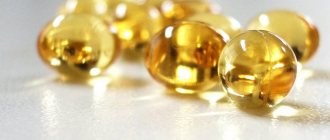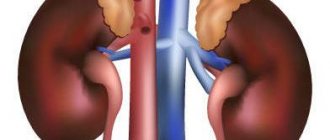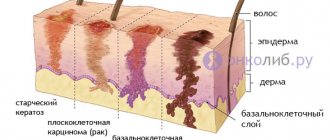One of the main “problems” that medieval alchemists tried to solve was obtaining the “philosopher’s stone”. It was assumed that it was necessary for the mass production of gold from “base” metals.
The search was carried out in different directions, but the alchemists did not find either the “philosopher’s stone” or the “elixir of youth”. They made a lot of mistakes; Some of them were accused by their contemporaries of cheating, but alchemists did a lot for the future of chemical science, especially for the technique of laboratory experiments.
In the 17th century a new period began in the history of chemical science. It was during this period that a discovery occurred that largely anticipated the discovery of the element magnesium. In 1695, N. Gro, by evaporating the mineral water of the Epsom spring (England), obtained salt, which had a bitter taste and a laxative effect. A few years later it turned out that when interacting with “permanent alkali” (as soda and potash were called in those days), this salt forms a white, loose powder. Exactly the same powder was obtained by calcining a mineral found in the vicinity of the Greek city of Magnesia. For this similarity, Epsom salt received the name white magnesia.
In 1808, Humphry Davy, by electrolysis of slightly moistened white magnesia with mercury oxide, obtained an amalgam of a new metal, which was soon isolated from it and named magnesium. True, the magnesium obtained by Davy was contaminated with impurities; The first truly pure magnesium was obtained by A. Bussy in 1829.
Magnesium is a silvery-white, very light metal, almost 5 times lighter than copper, 4.5 times lighter than iron; even aluminum is 1.5 times heavier than magnesium. Magnesium melts at 651°C, but under normal conditions it is quite difficult to melt it: heated in air to 550°C, it flares up and instantly burns with a dazzlingly bright flame. A strip of magnesium foil can be easily set on fire with an ordinary match, and in an atmosphere of chlorine, Mg spontaneously ignites even at room temperature.
When magnesium burns (attention, tan lovers!) it produces a large amount of ultraviolet rays and heat - to heat a glass of ice water to a boil, you only need to burn 4 g of Mg.
In air, magnesium quickly fades as it becomes covered with an oxide film. This film serves as a reliable shell that protects the metal from further oxidation.
The chemical properties of magnesium are quite peculiar. It easily removes oxygen and chlorine from most elements, and is not afraid of caustic alkalis, soda, kerosene, gasoline and mineral oils. At the same time, it does not at all tolerate the effects of sea and mineral water and dissolves in them quite quickly. Almost without reacting with cold fresh water, it energetically displaces hydrogen from hot water.
Magnesium Now, as the best among analogues
Today there is an abundance of drugs containing magnesium on the market. Many manufacturers produce a mineral that is so necessary for humans. Why should you give preference to the Now Foods product? The nutritional supplement of this brand has a number of advantages.
- meets good manufacturing practice standards;
- is a kosher product;
- does not contain harmful or controversial ingredients;
- suitable for vegetarians;
- sold at an affordable price;
- Available in various forms, which gives the buyer the opportunity to choose.
Now Foods products have been in great demand for many years now. The company first appeared on the market in 1968. A small shop that sold vitamins has since grown into a huge enterprise.
Today it is a large concern that has gained a worldwide reputation. All nutritional supplements, including magnesium, deserve the most flattering customer reviews. It’s worth reading the comments, if only to make sure that they are all entirely positive. And this is a pattern. After all, the company’s employees value the brand’s reputation and always make sure that the products they put on sale are of high quality.
Why is magnesium deficiency dangerous?
Magnesium is very widely used in the body, and its deficiency is also widespread. Magnesium is found in bones, teeth, muscles, liver, kidneys. With a lack of magnesium, excess adrenaline develops, which is not useful for chronic stress and is fraught with emotional burnout and even hysterics. Under conditions of magnesium deficiency, fibroblasts poorly reduce collagen. During pregnancy, magnesium deficiency leads to fetal problems: cerebral palsy, low birth weight, and developmental defects. If there is not enough magnesium, appetite increases and obesity may develop.
We hope we've convinced you to start taking magnesium today!
Subscribe to our channel in Telegram >>>
Benefits of Magnesium from Now Foods
Magnesium is found in many cells of the human body. Most contain this mineral:
- bones;
- soft tissues;
- muscles;
- brain;
- heart.
If the body chronically does not receive enough of this substance, over time it will affect health. Symptoms of magnesium deficiency:
- fast fatiguability;
- increased irritability;
- sudden mood changes;
- pressure surges;
- limb spasms;
- daily headaches;
- tingling in muscles;
- heart rhythm disturbances;
- lack of appetite;
- frequent dizziness;
- attacks of nausea;
- gagging;
- difficulty with bowel movements;
- brittle nails;
- hair loss;
- joint pain;
- bone fragility;
- weight loss.
A Magnesium course from Now Foods will have a beneficial effect on the body.
- strengthens the nervous system;
- will increase stress resistance;
- relieves seizures;
- improves the functioning of the cardiovascular system;
- normalizes blood pressure;
- will make bone tissue stronger;
- prevents nail brittleness;
- restore health to hair;
- will establish enzymatic activity;
- improves digestion;
- eliminates problems with stool;
- will have a positive effect on reproductive function;
- will ease the symptoms of PMS.
Obvious improvements are the result of replenishing the deficiency of a mineral, the importance of which for humans cannot be overestimated. After all, he plays an important role:
- is a participant in carbohydrate and protein metabolism;
- promotes energy production;
- provides muscle contraction;
- responsible for the transmission of nerve impulses;
- participates in the production of enzymes;
- helps absorb calcium;
- has an effect on the absorption of B vitamins;
- takes part in metabolic processes.
The drug from the American manufacturer will be useful not only when health problems have already appeared. A preventive course of magnesium will also be very helpful. Especially in such cases:
- daily nervous tension;
- excessive physical activity;
- tendency to hysterics;
- depression;
- sleep disorder;
- malnutrition;
- chronic fatigue;
- apathetic state;
- lack of vital energy.
The daily requirement of magnesium for a healthy adult is 350-500 mg. With a long-term deficiency, a course is required during which the person will take more than this amount. This is how you can compensate for the lack of a mineral, while avoiding unpleasant consequences for the body.
The Now Foods brand offers nutritional supplements with varying concentrations of magnesium. This substance is also sold in combination with other ingredients that promote its absorption.
Foods High in Magnesium
Amount of magnesium per 100 g of product
- Spinach : 60 mg
- Parsley : 200 mg
- Peas : 50 mg
- Pumpkin seeds: 262 mg
- Almonds : 258 mg
- Hazelnuts : 258 mg
- Peanuts : 174 mg
- Soybean seeds : 240 mg
- Chickpeas : 160 mg
- Whole wheat flour: 140 mg
- Seafood : about 140 mg
- Dark chocolate: 107 mg
- Whole grain rice: 106 mg
Magnesium is found in many foods, but its deficiency is a fairly common diagnosis. Certain medications, as well as high levels of stress, can cause the body to lose this mineral in urine.
What beneficial properties of magnesium do you know? Let's talk about this later in our article.
Now variety of magnesium
Consider Now dietary supplements, which are an additional source of magnesium for humans.
Now Foods, Magnesium Citrate Pure Powder, 227 g
See the price on iHerb Reviews on iHerb
The drug is available in powder. Sold in plastic jars with a capacity of 227 grams. That's over 100 servings. Recommended dose 0.5 tsp. in a day. Before use, the powder is mixed with water. The food supplement is magnesium in its pure form. One serving is 315 mg of mineral substance.
Now Foods, Magnesium Citrate, 120 Capsules
See the price on iHerb Reviews on iHerb
Hard capsules. Sold 120 pieces per pack. The magnesium content in one serving (3 capsules) is 400 mg. Ingredients such as silica and cellulose are present. It is recommended to take three capsules per day. If this dosage is too high for you, you can easily reduce the number of capsules.
Now Foods, Magnesium Citrate, 180 Capsules
See the price on iHerb Reviews on iHerb
Soft capsules. Packed in 180 pieces. The course lasts two months. Take three capsules daily. Together with a portion of this dietary supplement (3 capsules), about 500 mg of magnesium enters the body.
Now Foods, Magnesium Citrate, 200 mg, 250 Tablets
See the price on iHerb Reviews on iHerb
Release form: coated capsules. One package contains 250 tablets of 200 mg. This is 125 servings, since the recommended number of capsules is two during the day. The difference in composition from the previous product is that here, in addition to stearic acid and cellulose, croscarmellose sodium is present.
Now Foods, Magnesium Caps, 400 mg, 180 capsules
See the price on iHerb Reviews on iHerb
Magnesium capsules. Packing – 180 pieces. One capsule contains 400 mg of active ingredient. Contains vegetable cellulose, stearic acid and silica. Use once a day.
The advantage of this supplement is that one capsule contains a large amount of active ingredient. That is, if your doctor has prescribed you to drink large doses of magnesium, then there is no need to take several capsules, it is enough to replace it with one.
Please note that the above supplements contain 400 mg per 3 capsules, which means 133 mg per capsule. Thus, if you need large doses, then it is better to purchase this option. If the goal is only prevention, then it is better to take another supplement.
Now Foods, Calcium Citrate, 250 Tablets
See the price on iHerb Reviews on iHerb
There are 250 tablets in a package. This amount is enough for 125 days. You need to take one capsule twice a day. The capsules contain the most calcium and magnesium (300 mg per 2 capsules). The formula also includes copper, zinc, manganese. Additional ingredients are also present: soybean oil, cellulose, stearic acid and silica.
Now Foods, Calcium & Magnesium 250 Tablets
See the price on iHerb Reviews on iHerb
Release form: tablets. There are 250 pieces in a package. A serving contains 500 mg of magnesium and 1 g of calcium. Take two tablets per day. The product contains stearic acid and cellulose.
Now Foods, Calcium Magnesium Complex, 240 Softgels
See the price on iHerb Reviews on iHerb
Complex drug. Available in the form of soft capsules. Packaged in plastic bottles of 240 capsules. In addition to the main ingredients, it contains useful components such as vitamin D3 and zinc. It is recommended to take three capsules daily. Other ingredients: glycerin, gelatin, beeswax. The formula also includes rice bran oil and soy lecithin.
By purchasing one of the above Now Foods brand products, a person has the opportunity to eliminate magnesium deficiency in the body, as well as prevent adverse consequences associated with a deficiency of this mineral. By consuming the dose recommended by the manufacturer, you will be able to fully satisfy your own need for such an important substance.
Being in nature
Clark magnesium - 1.95% (19.5 kg/t). This is one of the most common elements of the earth's crust. Large amounts of magnesium are found in seawater in the form of a salt solution. The main minerals with a high mass content of magnesium:
- sea water - (0.12-0.13%),
- carnallite - MgCl2 • KCl • 6H2O (8.7%),
- bischofite - MgCl2 • 6H2O (11.9%),
- kieserite - MgSO4 • H2O (17.6%),
- epsomite - MgSO4 • 7H2O (9.9%),
- kainite - KCl • MgSO4 • 3H2O (9.8%),
- magnesite - MgCO3 (28.7%),
- dolomite - CaCO3 MgCO3 (13.1%),
- brucite - Mg(OH)2 (41.6%).
Magnesium salts are found in large quantities in salt deposits of self-sediment lakes. Deposits of carnallite of sedimentary origin are found in many countries.
Magnesite is formed predominantly in hydrothermal conditions and belongs to medium-temperature hydrothermal deposits. Dolomite is also an important magnesium raw material. Dolomite deposits are widespread and their reserves are enormous. They are genetically related to carbonate sedimentary layers and most of them are of Precambrian or Permian geological age. Dolomite deposits are formed by sedimentation, but can also arise when limestone is exposed to hydrothermal solutions, groundwater or surface water.
An extremely rare mineral is native magnesium, formed in flows of reducing gases and first discovered in 1991 in the coastal sediments of Chona (Eastern Siberia)[5][6], and then in lavas in Southern Hissar (Tajikistan)[7].
Natural sources of magnesium
- Fossil mineral deposits (magnesian and potassium-magnesian carbonates: dolomite, magnesite).
- Sea water.
- Brines (brine of salt lakes).
In 1995, most of the world's magnesium production was concentrated in the USA (43%), CIS countries (26%) and Norway (17%), with China's share of the market growing [8][9].
Magnesium during pregnancy
Pregnant and lactating women should consult their doctor about the use of magnesium. It is known that during this period of life the need for this mineral increases. But at the same time, before using any drug, you should be completely sure of the appropriateness of your actions.
By the way, not only pregnant women need to get advice before starting the course. This rule applies to everyone without exception. Completing the course is questionable if a person has certain diseases. Magnesium may also be incompatible with a number of medications. All these points should definitely be taken into account. After all, the most important thing at stake is your health.
How to get the supplement
In nature, this substance exists only as a compound. Despite the fact that it is quite common - more than other silicates - it still needs to be extracted. The main materials for the natural mineral are protoenstatite, clinoenstatite, enstatite, wen (steatite).
The most common production method is to collect glass with a suitable composition. If necessary, they are crushed, and then heated and crystallized at high temperatures.
The second method is sintering mixtures of magnesium and silicon. The work also takes place at high temperatures. However, this method is less common and is used a little less frequently than the others.
To obtain the additive, hydrosilicate, for example, talc or chrysolite, is pierced. The search for new methods is still ongoing, and new patents appear periodically.
Availability of dietary supplement
You can buy Magnesium Now in any convenient way. The products of this manufacturer are found on pharmacy shelves. If the option of looking for dietary supplements is not acceptable to you, place an order online in the iHerb store. This is the right option to get the right product in the shortest possible time. By the way, the prices here are the most reasonable.
So, what do you get with a jar filled with capsules containing high concentrations of magnesium? Strong nerves, well-functioning stomach, quality sleep at night, irrepressible energy during the day, excellent health and a wonderful mood. The main thing is not to skip taking a dietary supplement. Take care of your health - everything is in your hands!
Two hundred minerals and three sources of magnesium
The earth's crust is rich in magnesium - it contains more than 2.1% of this element. Only six elements of the periodic table are found on Earth more often than magnesium. It is part of almost two hundred minerals. But it is obtained mainly from three - magnesite, dolomite and carnallite.
In our country, rich magnesite deposits are located in the Middle Urals (Satkinskoye) and in the Orenburg region (Khalilovskoye). And in the area of the city of Solikamsk, the world's largest deposit of carnallite is being developed. Dolomite, the most common of magnesium-containing minerals, is found in the Donbass, Moscow and Leningrad regions and many other places.
Magnesium metal is produced in two ways: electrothermal (or metallothermic) and electrolytic. As the names suggest, both processes involve electricity. But in the first case, its role is reduced to heating the reaction apparatus, and magnesium oxide obtained from minerals is reduced with some reducing agent, for example, coal, silicon, aluminum. This method is quite promising, and recently it has been increasingly used. However, the main industrial method for producing Mg is the second, electrolytic.
The electrolyte is a melt of anhydrous chlorides of magnesium, potassium and sodium; metallic magnesium is released at the iron cathode, and chlorine ions are discharged at the graphite anode. The process takes place in special electrolyzer baths. Molten magnesium floats to the surface of the bath, from where it is removed from time to time with a vacuum ladle and then poured into molds. But the process does not end there: there are still too many impurities in such magnesium. Therefore, the second stage is inevitable - purification of Mg. Magnesium can be refined in two ways - by remelting and fluxes or by sublimation in a vacuum. The meaning of the first method is well known: special additives - fluxes - interact with impurities and transform them into compounds that can be easily separated from the metal mechanically. The second method, vacuum sublimation, requires more complex equipment, but with its help, purer magnesium is obtained. Sublimation is carried out in special vacuum devices - steel cylindrical retorts. The “rough” metal is placed at the bottom of the retort, closed and the air is pumped out. Then the lower part of the retort is heated, and the upper part is constantly cooled by outside air. Under the influence of high temperature, magnesium sublimes - it goes into a gaseous state, bypassing the liquid state. Its vapor rises and condenses on the cold walls of the upper part of the retort. In this way it is possible to obtain a very pure metal containing over 99.99% magnesium.
From the kingdom of Neptune
But not only the earth’s crust is rich in magnesium - practically inexhaustible and constantly replenished reserves are stored in the blue pantries of the oceans and seas. Each cubic meter of sea water contains about 4 kg of magnesium. In total, more than 64,016 tons of this element are dissolved in the waters of the world’s oceans.
Effect of magnesium chloride on the body - final thoughts
- Magnesium can be obtained through diet by eating healthy foods such as dark leafy green vegetables. However, in certain situations, magnesium chloride is an additional form. It can be taken to increase levels of this key mineral, for example in cases of magnesium deficiency.
- What is magnesium chloride used for? The best use is to overcome magnesium deficiency.
- Other common uses of magnesium chloride are to improve sleep, digestion, endurance, and muscle pain. It can also help promote relaxation overall.
- If you put it in water, it will dissolve easily. This is why it is said to be easier to absorb than some other forms of magnesium, which do not dissolve well in liquids.
- The benefits of magnesium chloride can be obtained by using it in tablet, liquid or powder form. Either as a magnesium spray oil or lotion.
The best forms of magnesium and their absorption by the body
On the Estonian version of the Vitamiini ABC
and English-language resources comparing various forms of magnesium and their characteristic properties, citrate, gluconate and lactate (glycinate) are considered the best in terms of absorption. For clarity, I will list other names for magnesium glycinate here: magnesium diglycinate, magnesium bisglycinate, magnesium bisglycinate chelate. All names actually mean the same thing. The Vitamiini ABC page states that 1 g of magnesium glycinate contains 100 mg, or 10%, of elemental magnesium. When a magnesium glycinate product contains up to 14% elemental magnesium, it is considered high quality. Ecosh Magnesium Glycinate products have an absolute magnesium content of 18%, which is considered a very high percentage.
The worst digestible material is magnesium oxide/oxalate, which is a very inexpensive raw material and the elemental magnesium content in it is quite high - 58%, but the body is able to absorb only 4% of this amount. In addition, long-term use of magnesium oxide pollutes the kidneys. Pharmacies in Estonia mainly stock magnesium oxide preparations. They can also cause diarrhea. The citrate form also has a laxative effect due to the addition of citric acid.
Risks, side effects and interactions
As with all magnesium supplements, magnesium chloride side effects may include stomach upset and diarrhea. These potential side effects may be reduced or avoided by not taking more than recommended. And also take with meals.
Topical forms of magnesium are less likely to cause digestive side effects. However, after using magnesium oil, the skin often feels itchy. If this occurs, the itching should go away after you wash off the product.
You can try magnesium lotion, which is often combined with other skin-soothing ingredients such as aloe. Another option is to use magnesium flakes when taking a bath or foot soak.
The following drugs are known to interact with magnesium chloride:
- Demeclocycline
- Doxycycline
- Eltrombopag
- Limecycline
- Minocycline
- Oxytetracycline
- Tetracycline
- Ciprofloxacin
- Fleroxacin
- Gemifloxacin
- Levofloxacin
- Moxifloxacin
- Norfloxacin
- Ofloxacin
- Penicillamine
- Rilpivirine
This is not a complete list of medications. Therefore, consult your healthcare professional before combining magnesium chloride with any other medications or supplements.
Sometimes health care providers give magnesium chloride by injection. However, it is not recommended for those who are allergic to it or have severe heart or kidney disease. There are more potentially serious side effects from taking magnesium chloride injections. This is respiratory depression or a significant decrease in blood pressure.
Is it possible to overdose on magnesium?
As with any supplement, it is possible to overdose on magnesium. Therefore, it is important to study the drug instructions on the package and consult with your doctor about the ideal dosage of magnesium chloride.
This is especially necessary if you are pregnant, breastfeeding, have a medical condition, or are currently taking medications.
Get emergency medical help if you have signs of an allergic reaction such as hives, severe dizziness. As well as trouble breathing or swelling of the face, lips, tongue and/or throat.
Physical properties of magnesium carbonate:
| Parameter name: | Meaning: |
| Chemical formula | MgCO3 |
| Synonyms and names in a foreign language | magnesium carbonate magnesite (Russian) magnesium carbonate (Russian) |
| Type of substance | inorganic |
| Appearance | white trigonal crystals |
| Color | white |
| Taste | no taste |
| Smell | without smell |
| Physical state (at 20 °C and atmospheric pressure 1 atm.) | solid |
| Density (state of matter – solid, at 20 °C), kg/m3 | 3037 |
| Density (state of matter – solid, at 20 °C), g/cm3 | 3,037 |
| Decomposition temperature, °C | 500-650 |
| Melting point, °C | — |
| Molar mass, g/mol | 84,3139 |
| Solubility in water (25 oС), g/l | 0,0139 |
Sources
- Michael E. Wieser, Norman Holden, Tyler B. Coplen, John K. Böhlke, Michael Berglund, Willi A. Brand, Paul De Bièvre, Manfred Gröning, Robert D. Loss, Juris Meija, Takafumi Hirata, Thomas Prohaska, Ronny Schoenberg, Glenda O'Connor, Thomas Walczyk, Shige Yoneda, Xiang-Kun Zhu.
Atomic weights of the elements 2011 (IUPAC Technical Report) // Pure and Applied Chemistry. — 2013. — Vol. 85, no. 5. - P. 1047-1078. — DOI:10.1351/PAC-REP-13-03-02. - ↑ 1234
Magnesium: physical properties (English). WebElements. Retrieved August 15, 2013. - Chemical encyclopedia: in 5 volumes / editorial board: Knunyants I. L. (chief editor). - Moscow: Soviet Encyclopedia, 1990. - T. 2. - P. 621. - 671 p. — 100,000 copies.
- Three alkali metals for Discovery of the Elements (inaccessible link)
- Novgorodova M.I.
Native magnesium discovered? // Nature. - 1991. - No. 1. - P. 32-33. - Novgorodova M.I.
Native magnesium and the problem of its genesis // Geochemistry. - 1996. - No. 1. - P. 41-50. - Novgorodova M.I.
Magnesium is native, like gold... // Chemistry and life - XXI century. - 2000. - No. 7. - P. 18-19. - Elena Savinkina.
Magnesium. Encyclopedia Around the World. Retrieved September 8, 2012. Archived October 14, 2012. - Starostin I.V.
The place of magnesium salts in the treatment of cardiovascular diseases. (Russian) // Cardiology. - 2012. - T. 52, No. 8. - P. 83-88. - Chemists have found the key to a new type of battery https://www.membrana.ru/particle/16564
- Lysenko A.P.
- ↑ 12
Food chemistry: [textbook. for universities / Nechaev A.P., Traubenberg S.E., Kochetkova A.A., etc.]; edited by A. P. Nechaeva. — Ed. 4th, rev. and additional - St. Petersburg. : GIORD, 2007. - 635 pp. - 1000 copies. — ISBN 5-98879-011-9. - Magnesium content in food












